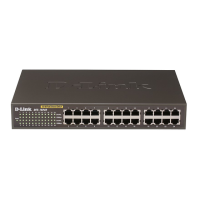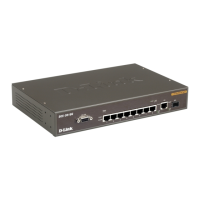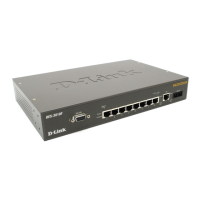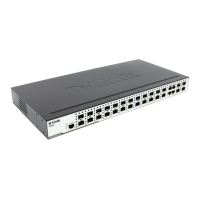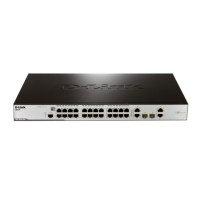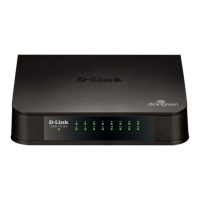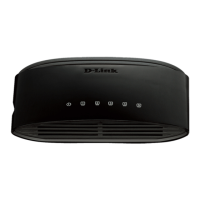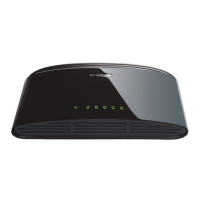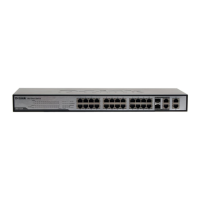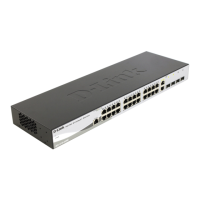DES-3000 Series Layer 2 Switch CLI Reference Manual
13
QOS COMMANDS
The DES-3000 Series switch supports priority classification for IEEE 802.1p Priority, DiffServ (DSCP) and IP TOS priority.
Incoming packets with piority tags are classified into 4 priority queues in the Switch. Priority may also be set according to
destination MAC address or Switch port.
For 802.1p Priority, the Switch has 4 priority classes of service. These priority classes of service are numbered from 3 (Class 3)
— the highest priority class of service — to 0 (Class 0) — the lowest priority class of service. The eight priority queues
specified in IEEE 802.1p (p0 to p7) are mapped to the Switch’s priority classes of service as follows:
• Priority 0 is assigned to the Switch’s Q1 class.
• Priority 1 is assigned to the Switch’s Q0 class.
• Priority 2 is assigned to the Switch’s Q0 class.
• Priority 3 is assigned to the Switch’s Q1 class.
• Priority 4 is assigned to the Switch’s Q2 class.
• Priority 5 is assigned to the Switch’s Q2 class.
• Priority 6 is assigned to the Switch’s Q3 class.
• Priority 7 is assigned to the Switch’s Q3 class.
802.1p priority scheduling is implemented using two types of methods, strict priority and round-robin priority. If no changes are
made to the QoS priority scheduling settings the method used is strict priority.
For strict priority-based scheduling, packets residing in the highest priority class of service are transmitted first. Once a strict
scheduling is implemented for QoS, the highest class will work in strict mode and the other classes will remain in a weight fair
scheduling mode. Higher priority packets always receive preference regardless of the amount of lower priority packets in the
buffer and regardless of the time elapsed since any lower priority packets have been transmitted. By default, the Switch is
configured to empty the buffer using strict priority.
NOTICE: The default QoS scheduling arrangement is a strict priority schedule which means the
switch will consider the highest class of service to have strict scheduling only, while the other queues
empty in a round-robin method. See the config scheduling_mechanism command in this section for
more information regarding this subject.
To use implement round-robin (weighted) priority, the Switch’s four priority classes of service can be configured to reduce the
buffer in a round-robin fashion - beginning with the highest priority class of service, and proceeding to the lowest priority class
of service before returning to the highest priority classes of service.
The weighted-priority based scheduling alleviates the main disadvantage of strict priority-based scheduling − in that lower
priority class of service get starved of bandwidth − by providing a minimum bandwidth to all classes of service for transmission.
This is accomplished by configuring the maximum number of packets allowed to be transmitted from a given priority class of
service and the maximum amount of time a given priority class of service will have to wait before being allowed to transmit its
accumulated packets. This establishes a Class of Service (CoS) for each of the Switch’s four hardware priority classes of
service.
The possible weight value range is: 1 to 55 packets.
In networking environments that use alternative QoS protocols, the Switch’s CoS can be mapped to accommodate DSCP
priority and Type of Service (ToS) priority. CoS can also be mapped to specified destination MAC addresses or ports on the
Switch.
The QoS commands in the Command Line Interface (CLI) are listed (along with the appropriate parameters) in the following
table.
95
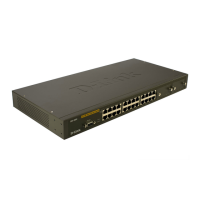
